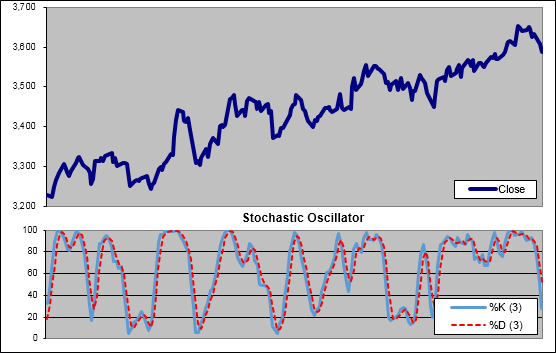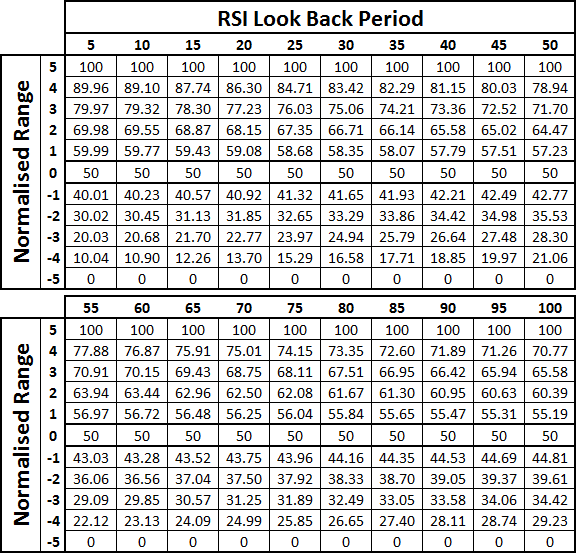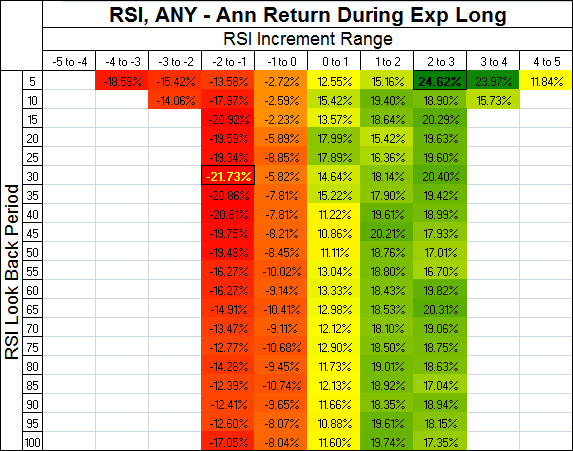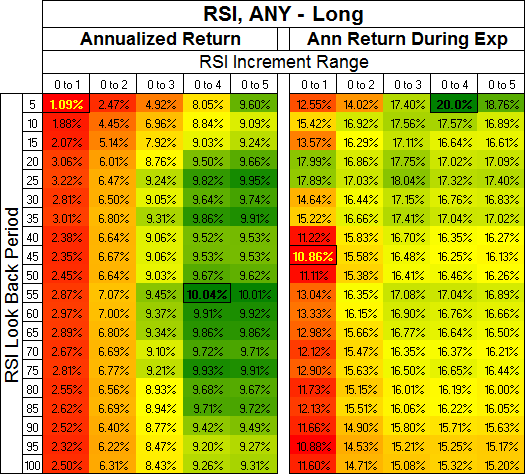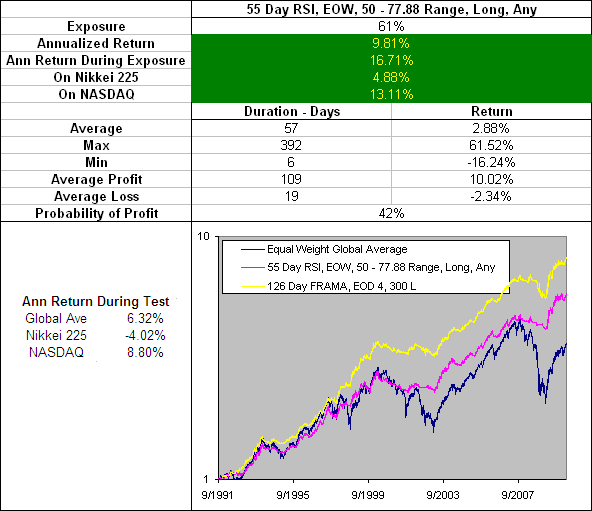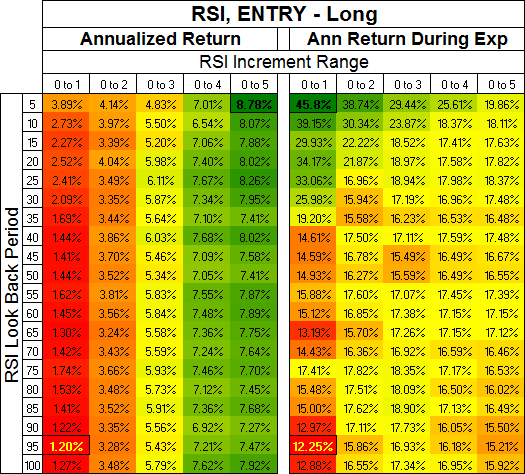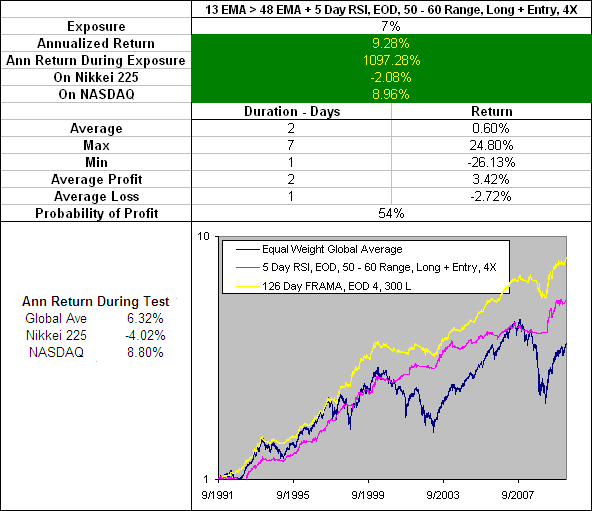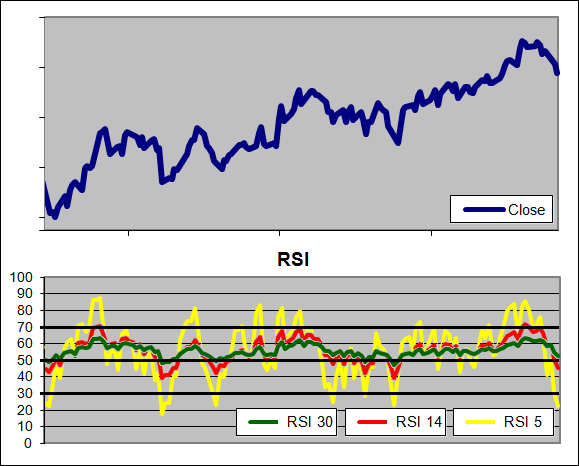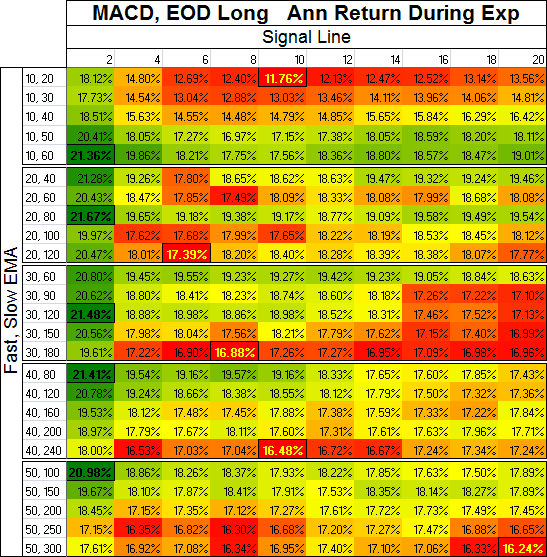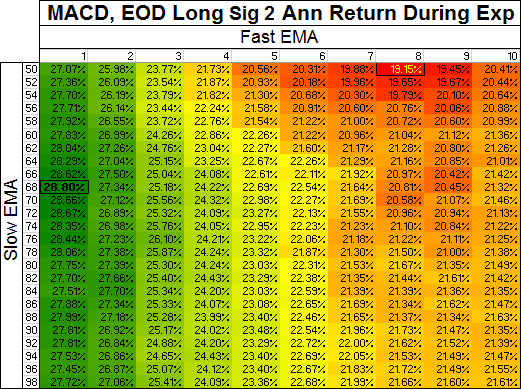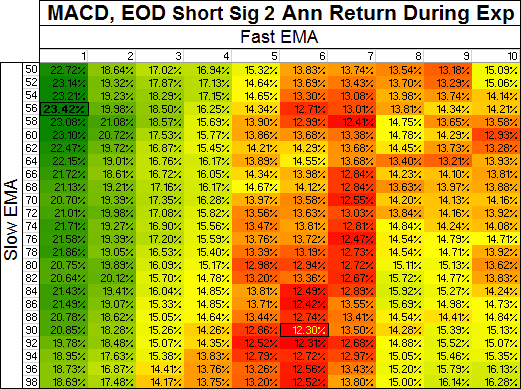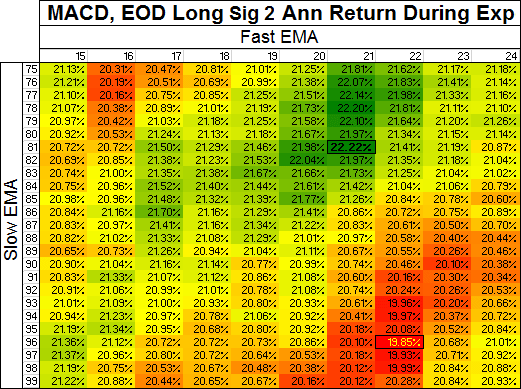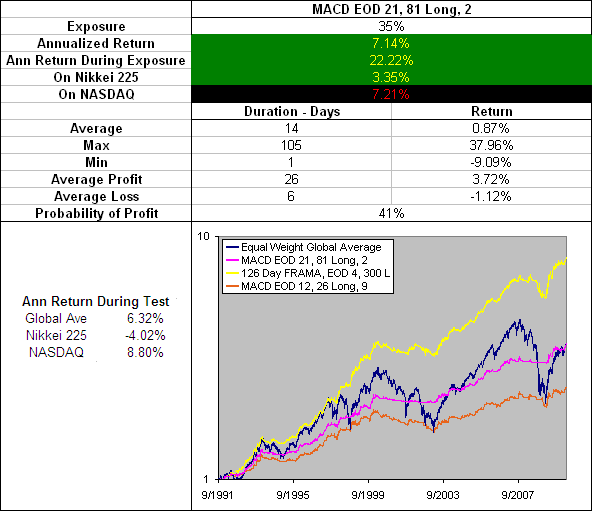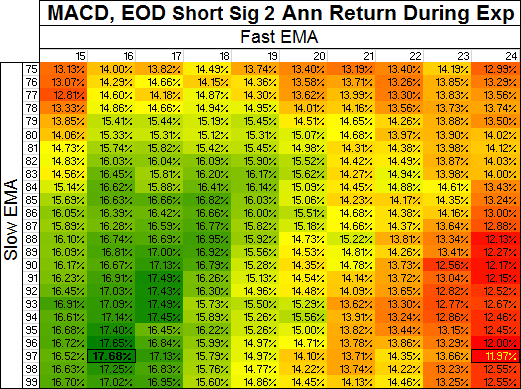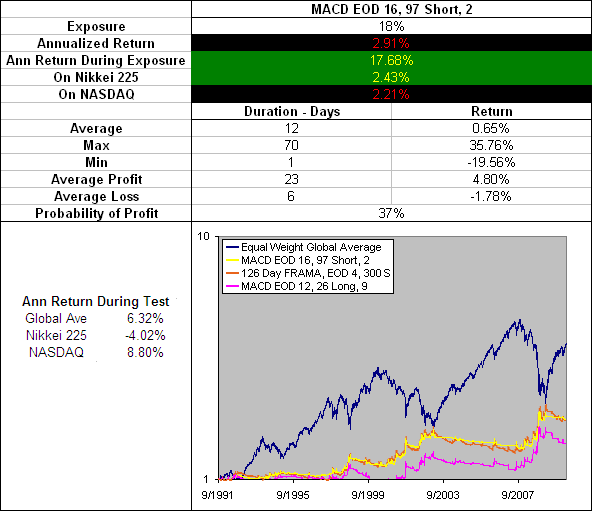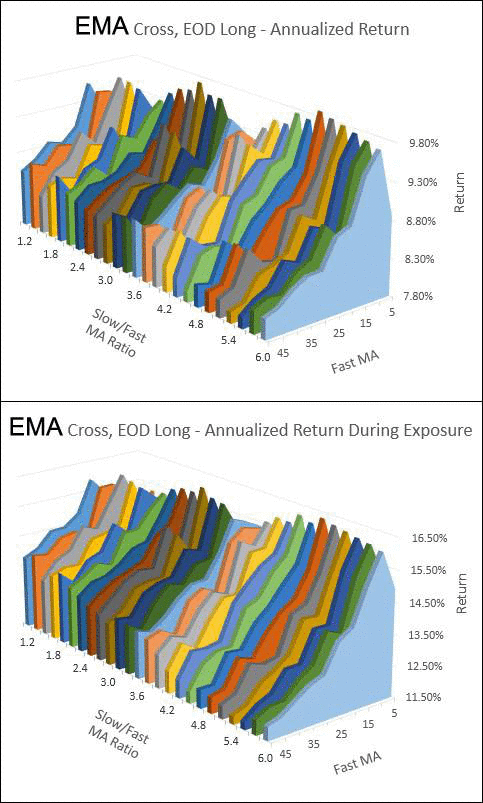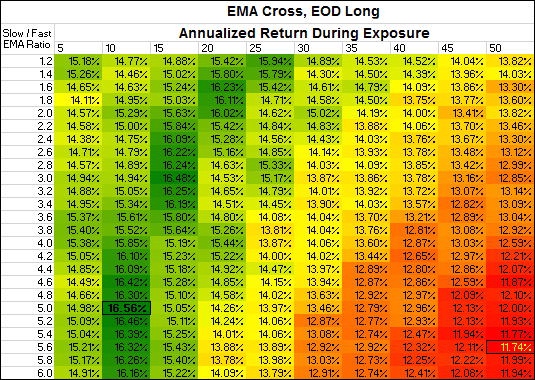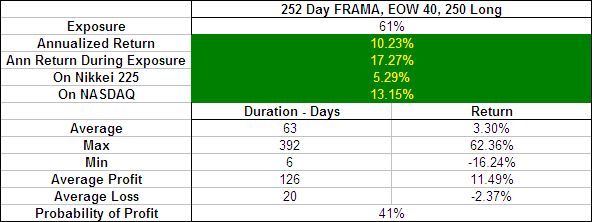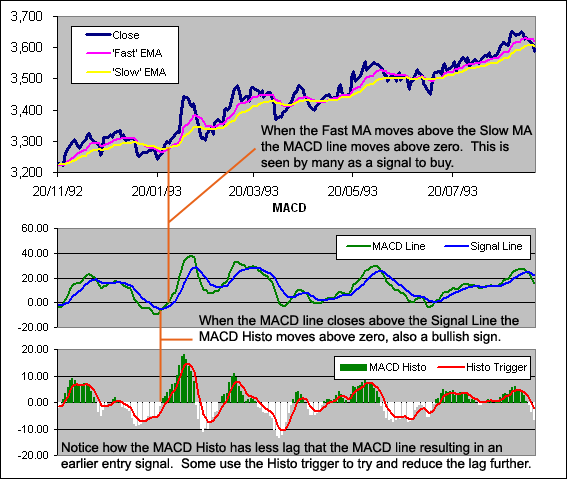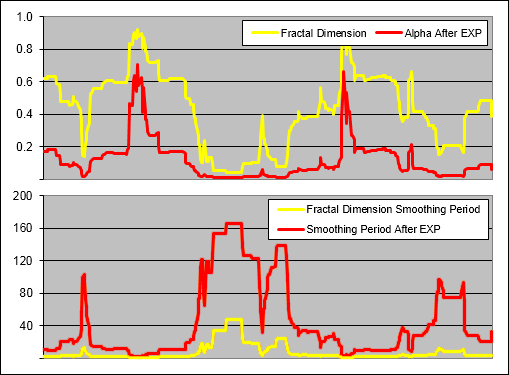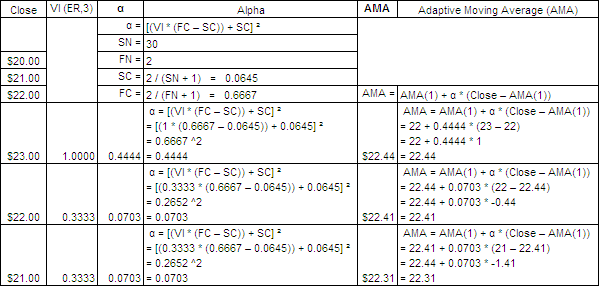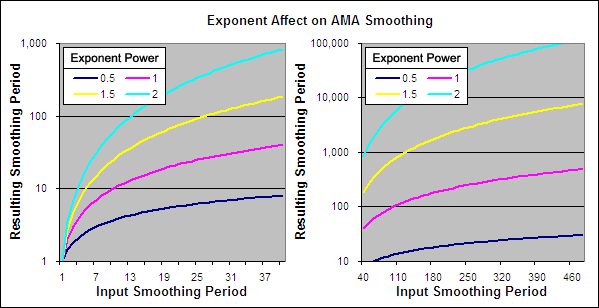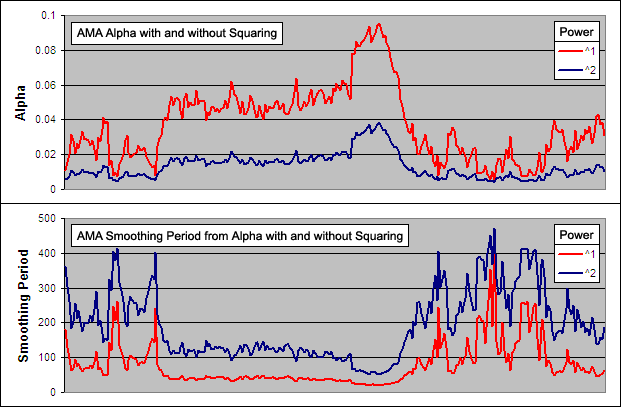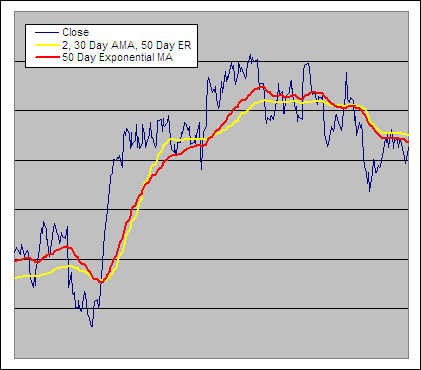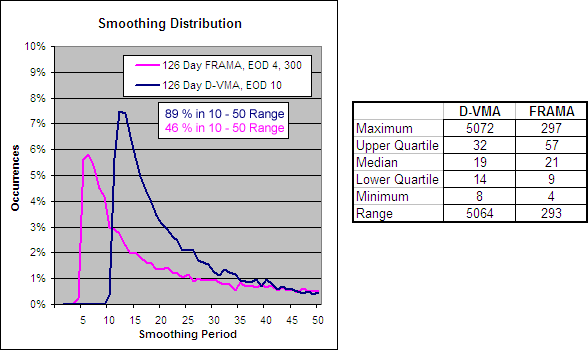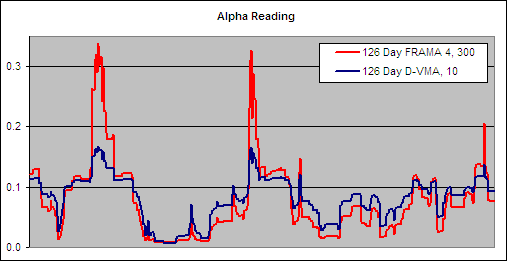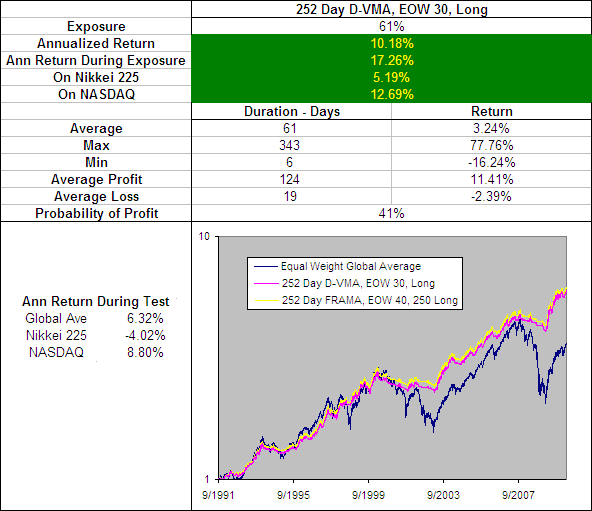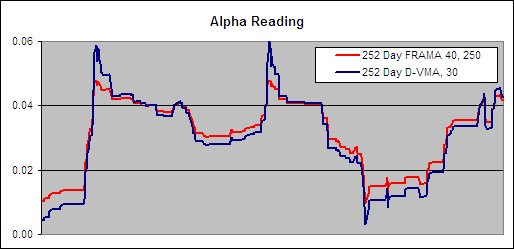The Stochastic Oscillator (SO) is a widely used momentum indicator. As part of the Technical Indicator Fight for Supremacy we have put it to the test through 16 different global markets~ (a total of 300 years data) to find out how well it works and what settings produce the best returns.
Download A FREE Spreadsheet With Data, Charts And Results
For all 1,248 Stochastic Oscillator Settings Tested
First of all lets establish how the market performs while the Stochastic Oscillator is in each 10th of its range:
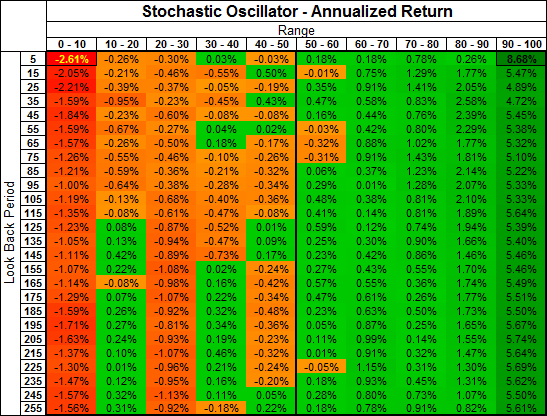
I have highlighted each of the negative results across a Red—>Orange gradient and positive results across a Light Green—>Dark Green gradient (depending on how great the loss or gain). Clearly most of the market gains occurred while the Stochastic Oscillator was above 50 and the lion’s share when it was above 90.
What this means is that when the market is in the top 50% of its range it has a tendency to go up and when it is in the top 90% of its range it has a strong tendency to go up. It also tells us that we want to avoid being long when the market is in the bottom 50% of its range. Over what period do we base this range? Interestingly, the returns do not change much over the different look back periods although the benefit of a longer look back is less volatility from the signals.
Lets now look at segments of 20-50% when the Stochastic Oscillator is above 50:
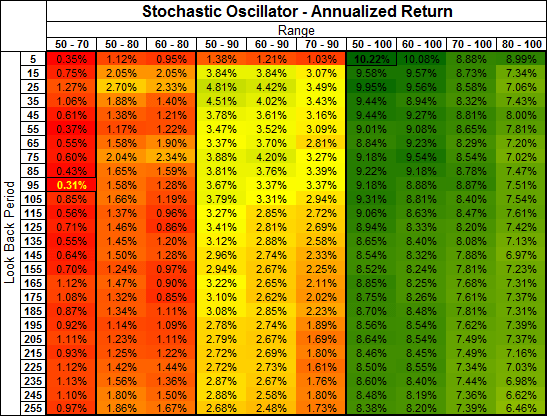
The table above is colour coded Red—>Yellow—>Green from Lowest—>Middle—>Highest return. The message coming through loud and clear is that you need to be long when the market is making new highs if you want to make money. Over a 255 day look back (about 1 year) the difference between going long in the 50-90 range vs the 50-100 range is the difference between making 2.68% or 8.38% a year!!
Lets have a look at the trade profile:
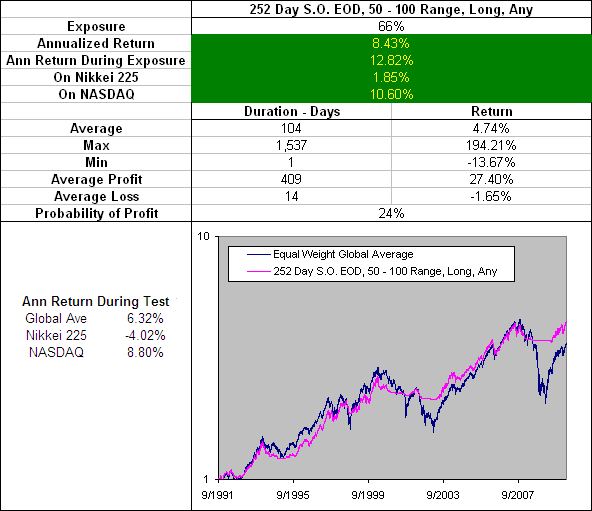
The results above show what would have happened if a long position was opened and held any time, any of the 16 test markets had a reading above 50 on their Stochastic Oscillator (meaning that the market was in the top half of its range). We chose a period of 252 days, not because the returns were the best, but because this look back produced a longer average trade duration and 252 days is the average number of trading days in a year.
The returns are not as good as we have seen from other indicators such as the RSI or the Moving Average Crossover but they are still respectable. Furthermore an average trade duration of 104 days is advantageous when looking for a long term indication of market direction.
What about the %K signal line? We did test this but the results were not worth taking the time to publish. They are included in the results spreadsheet for free download if you wish to review them however.
Stochastic Oscillator Conclusion
The Stochastic Oscillator %K line is too volatile and is not worth considering in your trading as originally suggested by Dr. George Lane in the 50’s. There are better options for short term trading such as the FRAMA. In fact, there are also better options available for longer-term indications of market direction than the Stochastic Oscillator as presented in this article… So is it worth bothering with at all?
Well… YES and here is why:
The fact illustrated by these tests is that the majority of gains occur when the market is in the top 10% of its range and nearly all of the gains occur when the market is within the top half of its range.
There has been a lot or research published on momentum strategies and they typically involve buying the best performing assets out of a selection and then rotating funds periodically so as to constantly stay with the best. Many people fear holding markets that are near their highs so by rotating constantly into the current market leaders these fears are be alleviated.
What our tests on the Stochastic Oscillator reveal however is that simply holding an index fund when it is in the top half of its range (over almost any look back period) will capture the majority of the gains while STILL avoiding those much feared ‘bubble burst’ like declines. Contrary to popular belief; when a market bubble bursts it does not do so over night. Penny stocks my grow exponentially and then plummet the next day. On rare occasions large companies may even do so. But major economies can not turn on a dime.
“In the event of nuclear war, disregard this message.” – Warren Buffett
Therefore the Stochastic Oscillator could be a useful addition to a momentum rotation type strategy. Another idea worth considering is to change the rules for your trading system based to the Stochastic Oscillator reading. For instance we know that most gains occur when the market is making new highs, therefore the rules for taking profits on a long position should be different when the Stochastic Oscillator is above 90 than they are when it is between 50 and 60.
Both of these applications will be included in future tests.
More in this series:
We have conducted and continue to conduct extensive tests on a variety of technical indicators. See how they perform and which reveal themselves as the best in the Technical Indicator Fight for Supremacy.
- ~The data used for these tests is included in the results spreadsheet and more details about our methodology can be found here.
- No interest was earned while in cash and no allowance has been made for transaction costs or slippage. Trades were tested using End Of Day (EOD) signals on Daily data.
